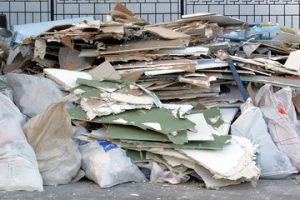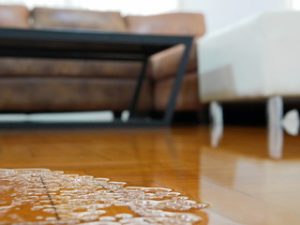Junk Removal Murrieta has evolved into more than just hauling away unwanted items. It now integrates sustainable methods, efficiency-focused systems, and innovative strategies that change how spaces are maintained. This shift has moved the process from a reactive cleanup to a proactive part of property care. Modern techniques make it possible to reclaim space without causing environmental strain.

New approaches emphasize sorting materials at the point of collection. This reduces the time and resources needed later in processing. Advanced tools allow separation of reusable, recyclable, and disposable items instantly. This means less waste ends up in landfills and more finds a second life.
Junk removal services now look at an item’s full lifecycle before disposal. They assess whether materials can be reconditioned or repurposed. This requires a trained eye for identifying hidden value in what might seem like trash. As a result, items once deemed worthless can return to use in creative ways.
Technology has become a key driver in modern junk removal practices. Digital platforms allow scheduling, monitoring, and tracking waste movement in real-time. These systems provide data that help optimize collection routes and improve service speed. Customers also gain transparency about how their items are handled.
Smart waste assessment tools are becoming standard in the field. Handheld devices can scan and categorize materials instantly. This helps crews make quick decisions on how to handle each item on site. It also cuts down on mistakes in sorting, which improves recycling success rates.
Urban living has created unique junk removal challenges. Limited storage space means clutter builds up quickly. Modern solutions target small-scale pickups and fast response times. This flexibility makes it easier for residents to maintain a clean and organized environment.
Businesses are also adapting to these changes in waste management. Companies now focus on clutter-free workspaces to improve productivity. Streamlined junk removal schedules ensure that unused equipment or outdated stock does not pile up. A cleaner workplace supports both employee morale and brand image.
The shift toward eco-conscious disposal has changed client expectations. People now ask where their junk goes and how it impacts the environment. This demand pushes providers to adopt greener methods and share proof of responsible practices. Trust grows when clients see the positive outcomes of their choices.
Seasonal patterns have become an important factor in modern junk removal. Certain months bring higher volumes of discarded items due to lifestyle changes. Services now plan around these cycles to manage workload and avoid delays. This keeps operations smooth even during peak seasons.
The introduction of modular hauling units has boosted efficiency. Instead of large trucks making fewer trips, smaller specialized units can handle targeted pickups. This approach reduces fuel use and increases collection frequency. It also makes it easier to navigate tight spaces in urban areas.
Community-driven junk removal programs are gaining popularity. Neighbors coordinate schedules to have items collected together. This reduces costs, saves time, and fosters a sense of shared responsibility. It also allows bulk sorting to be done in a single organized effort.
Artisans and creators are finding opportunity in discarded items. Salvaged wood, metal, and fabrics become raw materials for new products. This creative reuse adds value to materials that would otherwise go to waste. It also supports local craft industries and small businesses.
Awareness campaigns have expanded beyond simple recycling reminders. People are now educated about the economic and environmental benefits of proper junk removal. These campaigns promote habits that reduce clutter before it starts. Preventive action makes waste management more manageable for everyone.
Data analytics is shaping the future of junk removal planning. Patterns in waste generation help predict future needs. Providers can adjust their services to match expected demand, reducing unnecessary trips. This saves resources while maintaining efficiency.
Some providers now integrate donation networks into their operations. Items in good condition are rerouted to organizations that need them. This ensures that usable goods continue to serve a purpose instead of being destroyed. It also strengthens community ties through charitable action.
The importance of minimal disruption has become clear in residential junk removal. Providers use quieter equipment and low-emission vehicles to avoid disturbing neighborhoods. Scheduled pickups are planned to match the rhythms of the community. This respectful approach builds positive relationships with residents.
Large-scale junk removal projects benefit from collaborative planning. Teams coordinate with building managers, event organizers, or property developers. This ensures that cleanup is fast, safe, and minimally invasive. Clear communication avoids conflicts and ensures smooth execution.
Remote consultation has emerged as a useful tool in junk removal. Clients can send photos or videos for an initial assessment. This allows accurate estimates without requiring an on-site visit. It saves both time and transportation costs.
The future of junk removal lies in combining efficiency with responsibility. As technology advances, the process will become more precise and environmentally friendly. Providers will continue to innovate ways to minimize waste and maximize recovery. This will transform the perception of junk removal from a chore to an essential service that improves quality of life.
Junk removal is no longer just about getting rid of what is unwanted. It is a forward-thinking process that balances speed, sustainability, and creativity. By reimagining what waste means, modern practices turn clutter into opportunity. This ensures that every removal benefits both people and the planet.
Specialized equipment is becoming more available for challenging removals. Some items require careful dismantling to prevent hazards. Skilled teams use safety protocols and precision tools to handle these situations. This reduces risk while protecting surrounding property.
On-demand junk removal is transforming how quickly spaces can be cleared. Clients can request immediate pickups through mobile platforms. This rapid response suits events, relocations, or urgent clearouts. The convenience attracts both households and businesses.
Creative staging has become part of the junk removal process for reselling items. Certain objects gain higher value when presented attractively. Providers may clean, repair, or photograph items before selling them second-hand. This step maximizes revenue while avoiding waste.
Workshops on clutter management are now offered alongside junk removal. These sessions teach clients how to avoid overaccumulation. They share tips on organization, mindful purchasing, and responsible disposal. Education complements the physical removal process.
The demand for discreet junk removal has grown in sensitive situations. Some clients require privacy due to personal, legal, or business concerns. Providers offer unmarked vehicles and confidential handling to respect these needs. This ensures comfort for the client while maintaining professionalism.
Emergency junk removal services are essential after natural disruptions. Quick clearance of debris restores accessibility and safety. Specialized teams work efficiently under challenging conditions. Their role is vital in community recovery efforts.
Virtual inventory tracking is improving accountability in removal projects. Each collected item is recorded and tagged in a digital system. Clients can review where their items go and how they are processed. This transparency builds trust and proves compliance with regulations.
Hybrid junk removal models combine recycling, donation, and resale in one process. This approach ensures multiple positive outcomes from a single pickup. It minimizes waste while maximizing social and economic benefits. Providers who adopt this model stand out in the market.
Climate-conscious junk removal strategies are becoming the standard. Low-emission fleets, eco-friendly packaging, and reduced fuel trips all contribute. Providers are motivated by both regulation and customer preference. These steps align the industry with broader environmental goals.
Storage-to-removal coordination has simplified transitions for clients. Items in storage facilities can be directly removed without requiring relocation first. This reduces handling costs and saves time. It also encourages clearing out unused stored goods.
Special handling for electronic junk is more advanced now. Secure data wiping is done before recycling or resale. Components are separated for proper material recovery. This protects both the environment and client privacy.
The influence of design trends has also affected junk removal. Minimalist living encourages people to part with unnecessary items more frequently. This creates steady demand for quick, efficient removal services. Lifestyle changes directly shape the flow of unwanted goods.
Training programs for junk removal teams now cover environmental law, customer service, and safety. Well-trained crews handle complex jobs more efficiently. They also provide a better client experience through respectful communication. Professionalism strengthens the industry’s reputation.
Partnerships with upcycling businesses open new pathways for discarded goods. Items gain renewed function through creative transformation. This builds a circular economy where waste becomes resource. The synergy benefits both industries and the environment.
Personalized junk removal plans are becoming common for clients with unique needs. These plans consider schedules, item types, and preferred disposal methods. Customized service increases satisfaction and loyalty. It also ensures the process aligns with the client’s values.
As innovation continues, junk removal will become even more integrated into sustainable living. The focus will remain on efficiency, reuse, and respect for the environment. Every improvement turns clutter into potential, ensuring a cleaner, more resourceful future.





